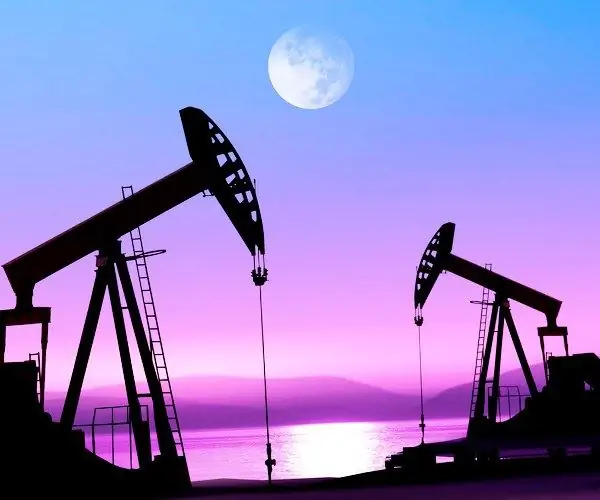- Author Antonio Harrison [email protected].
- Public 2023-12-16 07:44.
- Last modified 2025-01-22 21:44.
Oil is a mineral known to mankind for a long time. Today, the economies of the world depend on the prices for this black liquid, clashes and conflicts arise, and earlier it was not such an important part of the world order. How was oil produced in ancient times?

Oil in ancient times
This mineral has been known to mankind since ancient times. Six thousand years BC, natural bitumen (dense fractions of oil) were used in construction as a binder. Since the 6th century, people have thought of using oil as a combustible raw material. Almost until the 18th century, oil was used unrefined and unprocessed. Only in the middle of the 18th century, kerosene began to be extracted from oil.
Oil production
In ancient times, oil was extracted only in those places where it naturally came to the surface. At the place of its exit, the craftsmen built a well, strengthened its walls with boards and limestone slabs, and expanded the structure with metal hoops. This method did not allow to go too deep, as a lot of flammable and dangerous gases accumulated. They displaced all the air and could explode at any moment.
The craftsmen who dug these wells often suffocated when they were below. To solve this problem, the wells began to be made stepwise. This method was not very popular, since it required huge labor costs due to the volume of excavations.
Mining engineer A. Semenov in 1844 proposed and in 1848 implemented a method of oil production by drilling wells. Drilling makes it possible to produce oil in the so-called "gushing method". This is when oil gushes out of the well like a fountain due to excess pressure. The increased excess pressure was created artificially with the help of pumps. Another pressure could be created by pumping a huge amount of water into the reservoirs.
The method with water injection was the most effective, as it significantly reduced the number of mines and the pressure in the reservoir was maintained at the required level at all times. It is called the “reservoir pressure maintenance method”. Thanks to this, it is possible to avoid possible soil subsidence, earthquakes (due to the absence of a layer).
Application of oil
Petroleum products today occupy a key place in the world energy and fuel balance. By cracking and distillation, fuels such as fuel oil, gasoline, kerosene, diesel fuel, etc. are produced from oil. Oil is a valuable source of many chemicals - rubbers, plastics, synthetic rubbers, lubricants and detergents, additives and colorants. The volume of chemical use of oil reaches 10%.
Oil replacement
Since oil is a non-renewable resource, at current consumption rates, it will last for about another 40 years. Therefore, today scientists around the world are looking for options to replace this black liquid. The automotive industry is trying to introduce electricity. Methods are being developed to extract oil analogues from coal, oil shale and tar sands. During the first and second world wars, there was already a shortage of oil and it was then that a gas generator for a car was invented.






